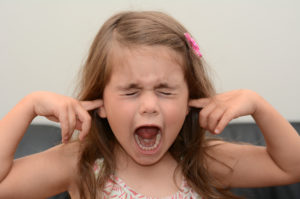Understanding Intensity
Children who have more intense reactions can be more difficult to manage. However, the positive side of intensity, is that these children also feel emotions very deeply and thus experience life at greater depth than those with less intensity. They tend to be more passionate, enthusiastic and emotional. As discussed earlier, temperament is a result of Mother Nature. One can support a child with their temperament and have some influence on how it is handled, knowing this is part of our biological make up.
Where does each person in your family fit on Mary Sheedy Kurcinka’s continuum for intensity?
1———————–2———————–3————————4——————5
(Mild Reaction) (Intense Reaction)
When your child cries, is it a small cry or a wail, or loud scream? Is your child even-tempered or are their emotions more up and down? Are reactions mild or intense? Do they get frustrated easily or have lots of patience? Do they smile with delight or jump for joy and shout with glee?
Intense individuals actually have a physical reaction that occurs very strongly in their bodies, compared to less intense individuals. Their heart beats faster, adrenaline and cortisol (the stress hormone) race through their bodies.
How to Manage an Intense Child?
When a child is not in an intense state, this is the best time to talk to your child about how they feel in moments of distress. Is there a feeling of “butterflies” or a “big knot” in the stomach? Does the heart seem to be pounding very fast? Does it feel as though one’s head is about to explode? Helping your child describe the sensations and have words to describe the feelings is very important. Instead of kicking or hitting, your child can then use words to describe what they are experiencing.
As the parent, you start to learn the warning signs that the intensity is rising. Your child’s voice may get louder, they may become very uncooperative, they might start pacing. You and your child need to recognize the signs and have a plan as to how to take a break before things escalate. Perhaps some quiet time, a walk, calm down time, a story, a hug, quiet music, a jump on the trampoline, or playing a musical instrument etc.
Soothing Activities for the Intense Child (Different ones will work for different children)
- Blowing bubbles
- Playing catch
- Reading a book
- Taking a nap
- Having a bath (but for intense children it is better to have the bath at least 90 minutes before bed-time as one needs body temperature to drop before sleep not rise)
- Playing with water (in the sink or in a big plastic tub, with turkey basters, sponges, cups etc.)
- Play an imagination game
- Chewing sugarless gum or sugarless candy
- Sucking from a straw
- Other sensory activities such as a massage or back scratch
- Exercise
- Repetitive motion such as a rocking chair
- Humour – try to get them laughing, this lowers the defence mechanisms and can switch them out of their intense state
Lastly, good nutrition and enough sleep are essential for the intense child. Your intense child will need to go to bed early, in order that there is enough time to decompress before falling asleep. The intense child needs a longer bed-time routine to help their arousal system calm down. Suggestions are stories read by both parents, time to chat and cuddle, massage or back scratch and quiet music. (You’re a Shining Light by Lynne Cox and Dream Child by Joyfilled Music are both excellent, soothing CDs for younger children).
How much sleep does an individual need, on average?
- Infants: 14-18 hours depending on the age
- Toddlers: (1-3 yrs.) 13-15 hours (over a 24 hour period)
- Preschoolers: 12 hours
- School-age: 10 hours
- Adolescents: 9.25 hours
- Adults: 8.25 hours
If you and your child are both under-slept, naturally, neither of you will cope very well. Sleep has to be a priority.
Take care of yourself and your child,
Warmly,
Want to Connect?
Subscribe now to receive free weekly parenting tips and inspiration.









One thought on “The Temperament of Intensity and How to Calm Your Child”
Comments are closed.